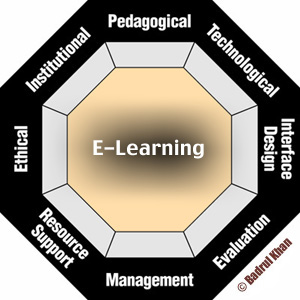Teaching strategy using technology
It is important to understand the phenomena of online teaching and learning and to examine the various techniques, methods and approaches that can be used. For example presentation graphics packages such as PowerPoint can be annotated with streaming audio but could lack in-depth content. However slide shows have the ability to stimulate thought and inquiry learning because adults can use their prior knowledge in formulating opinions. Another example is the computer-animated simulations which can also add profundity to the lesson because it not only draws the student’s attention, the animation makes one associate the simulation to a situation and is more conducive to learning. Many adults think and process information differently and computer-animated simulations may evoke thoughts from different perspectives. Computer-mediated methods such as Web-based discussion boards may encourage students who do not actively engage and participate in face-to-face discussions to participate actively in computer-mediated discussions. This active computer –mediated discussions occurs because it facilitates communication between many people from different backgrounds and cultures without the adults being worried about gender or physical abilities. Adobe Acrobat files is electronically produced and looks like the printed copy of a book, and saves on unnecessary paper and places for storage.
Online teaching and learning is a tool that assists certain learners that have opted to do a particular course in their own time and at their own convenience. These online learners take responsibility for their own learning. As a result online teaching and learning enhances participation, it is student centered, motivates students to discover information they need for their course of study and keeps the students in control of their own learning. Also, however it challenges these students as they have to be very disciplined and goal-directed.
It is also imperative to understand the online learner’s needs. The students need clear guidance and instructions because everything is in written form and words should be used effectively (White, K (eds.) 2004). The wording should be clear and used in a way that all adults can understand. They also need social interaction and this can become meaningful through discussion boards and emailing those participating in the same course.
The teaching and learning process in programme design using digital technology faces various challenges when trying to accommodate diverse learning styles and learners from different cultures yet still providing sufficient content. Benson, (2002) uses the analogy of “inverting the classroom”. Therefore by using digital technologies, it tries to enable this diverse culture to view or hear artefacts by using a menu option on the computer screen.
In the multimedia classroom, computers and audio visual material is used however one wonders about technology problems that could arise and how it affects the teaching and learning process. Another concern is that of age, race and ethnicity, the marginalised group, and rural or urban locality which Benson, D (2002, p. 145) calls the “digital divide”.
With these needs and challenges in mind, various techniques, methods and approaches can be implemented.
REFERENCES

Benson, D. (2002). Digital technologies and the scholarship of teaching and learning in Sociology. Teaching Sociology. 30, 140-157.
Greenlaw, S. (1999). Using groupware to enhance teaching and learning in undergraduate economics. Journal of Economic Education. 30 (1), 33-42.
White, K. & Baker, J. (eds.) (2004). The student guide to successful online learning. A handbook of tips, strategies and techniques. Pearson Education Inc., USA.

No comments:
Post a Comment